Can You Mix Light and Dark Floors Throughout Your Home?
If you’re building a new house, it might make sense to install the same flooring throughout the home.
Remodeling is different.
It can be expensive replacing all of the flooring inside your home. So most homeowners select one room or region at a time. Replace the main floor living space as you update a kitchen. Or replace the flooring in the entire master suite as you upgrade.
That’s when the questions start. Is it okay to mix light and dark floors? Can you combine different materials and styles? How many kinds of flooring are acceptable inside a home?
Using the same flooring throughout a home creates a sense of conformity. It provides peace and cohesion as you move from room to room.
But that isn’t practical. Would you really want carpet in a kitchen?
So what do you do? Can you mix light and dark floors?
Hard flooring surfaces
When you start looking at flooring, you’ll discover a wide array of materials available for consideration. Hardwood. Engineered wood. Laminate. Luxury vinyl planks. Tile.
When you move into each type of material, the possibilities continue to grow. Oak or walnut? Light or dark? Hard or soft?
People love hard flooring, especially in main living spaces. They’re durable. They’re easy to maintain.
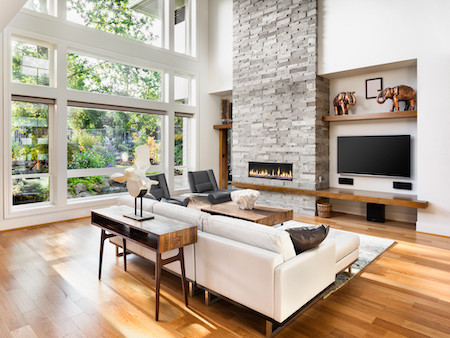 If you’re remodeling your kitchen, for example, and you already have hardwood in your living space, what’s the best strategy for adding new flooring?
If you’re remodeling your kitchen, for example, and you already have hardwood in your living space, what’s the best strategy for adding new flooring?
Don’t match. Compliment instead. It’s only natural to want to create clean lines throughout the main living space. But trying to match will typically create a line that doesn’t seem quite right. And if you do get the same color as other flooring, cabinets, and furniture, it can blend in and give you a monochromatic look. It comes off looking rather bland, and it can be harder to bring back pizzazz.
At the same time, don’t go overboard on colors. If everything is a different color, it may appear chaotic and messy. Start with a theme. Then ensure everything you select fits nicely into that theme, creating an ambiance you can live with for years to come.
Soft flooring surfaces
Every flooring material has merits in different rooms in your home. Tile and hardwood work well in a kitchen. Carpet works well in a bedroom.
While carpeting has lost some of its luster from a few decades ago, it’s still a great choice for bedrooms and other rooms where you’re looking at creating warmth.
A thick, plush carpet can be a welcome relief on your toes when you hop out of bed on a cold winter morning. It can be a sound barrier when installed in a media room. Kids will love it when they’re lying on the ground, playing with their toys. It can add richness to a home office, and be just the environment you need as you’re on Zoom and meeting clients.
If you’re installing carpet and you’re not sure what color to choose, we suggest keeping it neutral. Beiges and grays give a room just the right amount of ambiance to let your decorating style shine through. It gives you a chance to play with colors in other decor features that are more easily switched out.
Can you go with wilder colors? Of course. Only you know what’s right for you, and what you’re willing to live with for years to come. We suggest that you stick with a theme or color palette as you move from room to room. Don’t install a different color in every bedroom, and mix and match other materials in hallways and community living spaces.
Light or dark? What do you do?
Lighter colors will give your room a more open feeling. If you have smaller, more defined space, lighter colors can make it appear larger. Light-colored floors will brighten an area and bring attention to the details of the room.
Dark finishes make a space feel more intimate and homey. If you have ample space and you want clear definition, dark colors can instantly bring a comfort level to any room you’re designing. With the right accents and lighting, it can give your home a sense of sophistication.
If you have a room filled with natural light, a dark floor will work well. For your north-facing rooms, and rooms with a smaller, darker feel, sticking with lighter tones will allow the room to open up.
The key is to have fun with your space, and make it as unique as you. While you can research what the design community offers as guidelines, in the end, this is all about you. Whatever you choose will work well if you plan and think about flow.
Transitions are important
Once you’ve decided on what flooring to install, the next thing to consider is how each room will fit together. Luckily, manufacturers build transitions to make flow a little easier.
The easiest way is to install the same flooring throughout your living space. Install it and forget it. It keeps the flow moving from one side of your home to the other.
If that’s not possible, be sure the two floors coming together have complimentary undertones. You wouldn’t put a gray-toned hardwood next to a yellow-toned laminate. The two should blend together well and appear cohesive.
Remember the rule of two. While you might find a dozen flooring materials that pique your interest, narrow it down to the two that are most functional for your lifestyle. Then use those two throughout your home. This is even more important if you can see both flooring materials in the open spaces of your home.
Make each transition at a place that makes sense. Doorways work well because it creates a natural breaking point.
What are your preferred flooring materials?
Can you mix light and dark flooring colors, different materials, and create separate spaces? Of course?
With just a little planning, you’ll create the perfect ambiance and durability to match your lifestyle and taste.
Need a little help? That’s why we’re here. Give us a call today and we’ll be happy to answer all of your flooring design questions.

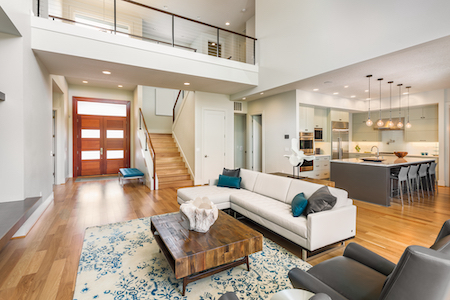 Your air supply is controlled by your HVAC system. Every time the furnace or air conditioner turns on, conditioned air flows through the ventilation system, and out into each room in your home. It can pick up anything else nearby, such as the candle scent or chemical spray.
Your air supply is controlled by your HVAC system. Every time the furnace or air conditioner turns on, conditioned air flows through the ventilation system, and out into each room in your home. It can pick up anything else nearby, such as the candle scent or chemical spray.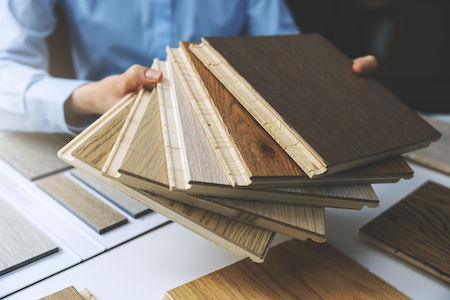 Sunlight is something all Coloradoans have to think about. The harsh rays don’t go away when fall sets in. Sunshine can stream through your windows throughout the year.
Sunlight is something all Coloradoans have to think about. The harsh rays don’t go away when fall sets in. Sunshine can stream through your windows throughout the year.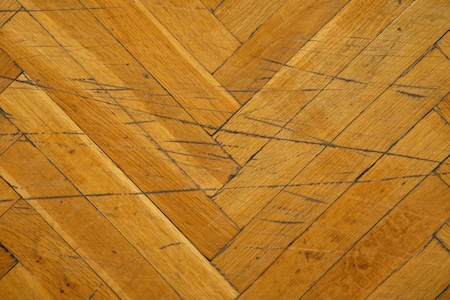 By far, this can be one of the most damaging things to your floor’s finish. Take a look at the bottom of a shoe. See all of those tiny rocks stuck in there? They have the potential to scratch your floors. Running shoes aren’t the only culprits; high heels can scratch and dent. If you want to keep your floors looking their best, create a “shoes off” policy and have them checked by the door.
By far, this can be one of the most damaging things to your floor’s finish. Take a look at the bottom of a shoe. See all of those tiny rocks stuck in there? They have the potential to scratch your floors. Running shoes aren’t the only culprits; high heels can scratch and dent. If you want to keep your floors looking their best, create a “shoes off” policy and have them checked by the door.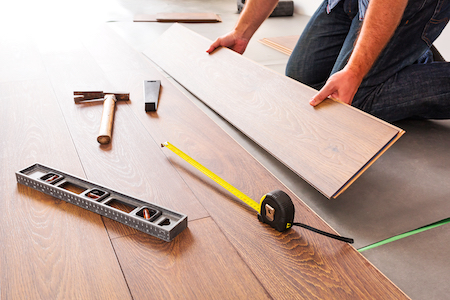 Can you place two different hardwood choices together inside your home? Of course. Homeowners do it all the time.
Can you place two different hardwood choices together inside your home? Of course. Homeowners do it all the time. We often have homeowners come in with one material in mind. After a little education, they selected a flooring product that wasn’t even on their list.
We often have homeowners come in with one material in mind. After a little education, they selected a flooring product that wasn’t even on their list. For everything you buy, you consider what it does to the environment. From gathering materials, to production of the product, to disposal methods once the item has run its useful life, you consider it all before finalizing your decision.
For everything you buy, you consider what it does to the environment. From gathering materials, to production of the product, to disposal methods once the item has run its useful life, you consider it all before finalizing your decision. We have a few suggestions for flooring materials that work well for wheelchair movement. While some you may expect, others may be new to you.
We have a few suggestions for flooring materials that work well for wheelchair movement. While some you may expect, others may be new to you. Strand woven is newer and more innovative in technology. Bamboo is shredded and woven together to create a stronger and more versatile floor. Strand woven is twice as strong as more traditional oak flooring.
Strand woven is newer and more innovative in technology. Bamboo is shredded and woven together to create a stronger and more versatile floor. Strand woven is twice as strong as more traditional oak flooring.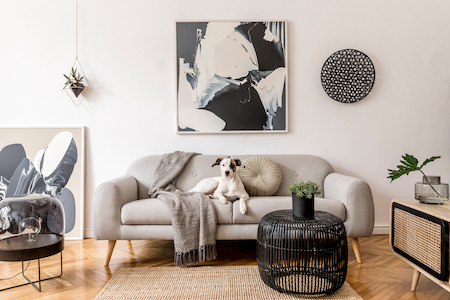 The smooth, hard surface area of hard flooring ensures dust, dirt, pet dander, pollen, and other debris sits on top of the surface and doesn’t burrow down into the material. It’s easy to wipe it away. A clean environment reduces your allergy symptoms, and may lessen other respiratory issues.
The smooth, hard surface area of hard flooring ensures dust, dirt, pet dander, pollen, and other debris sits on top of the surface and doesn’t burrow down into the material. It’s easy to wipe it away. A clean environment reduces your allergy symptoms, and may lessen other respiratory issues.